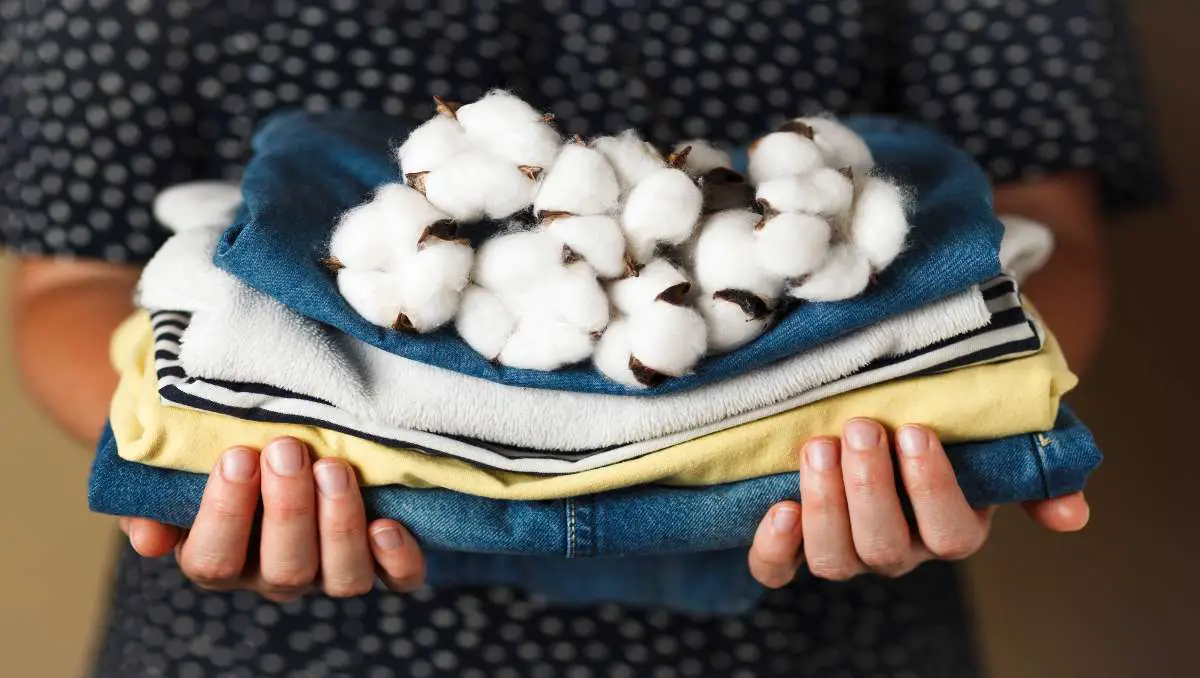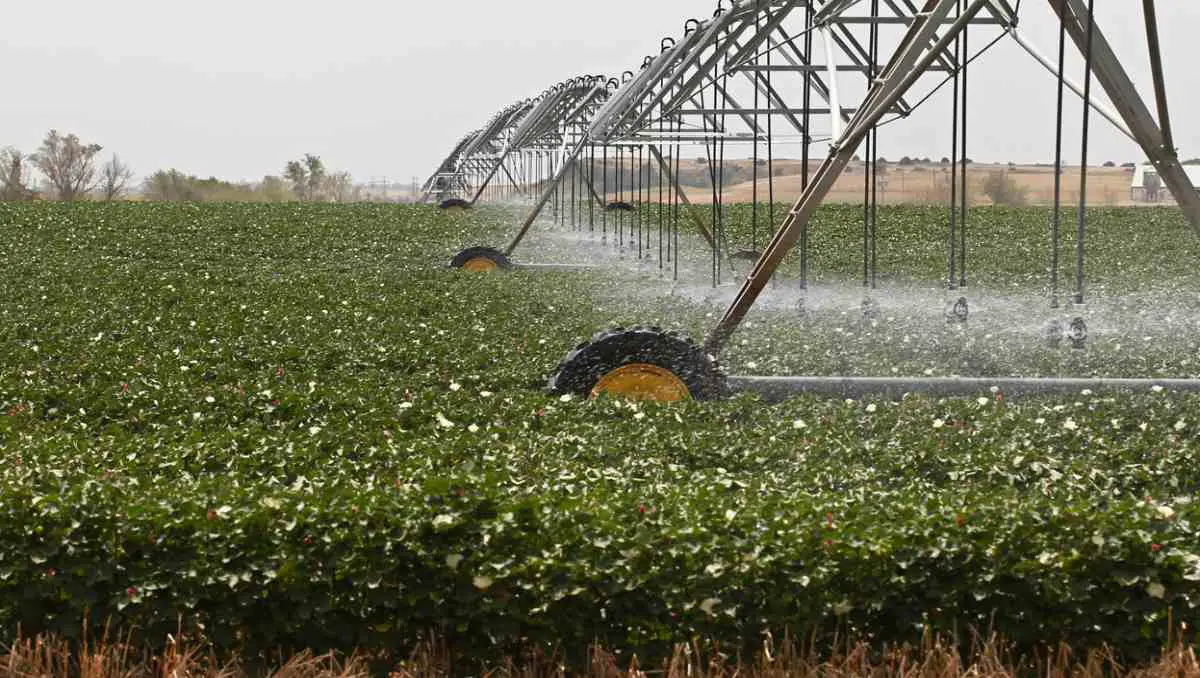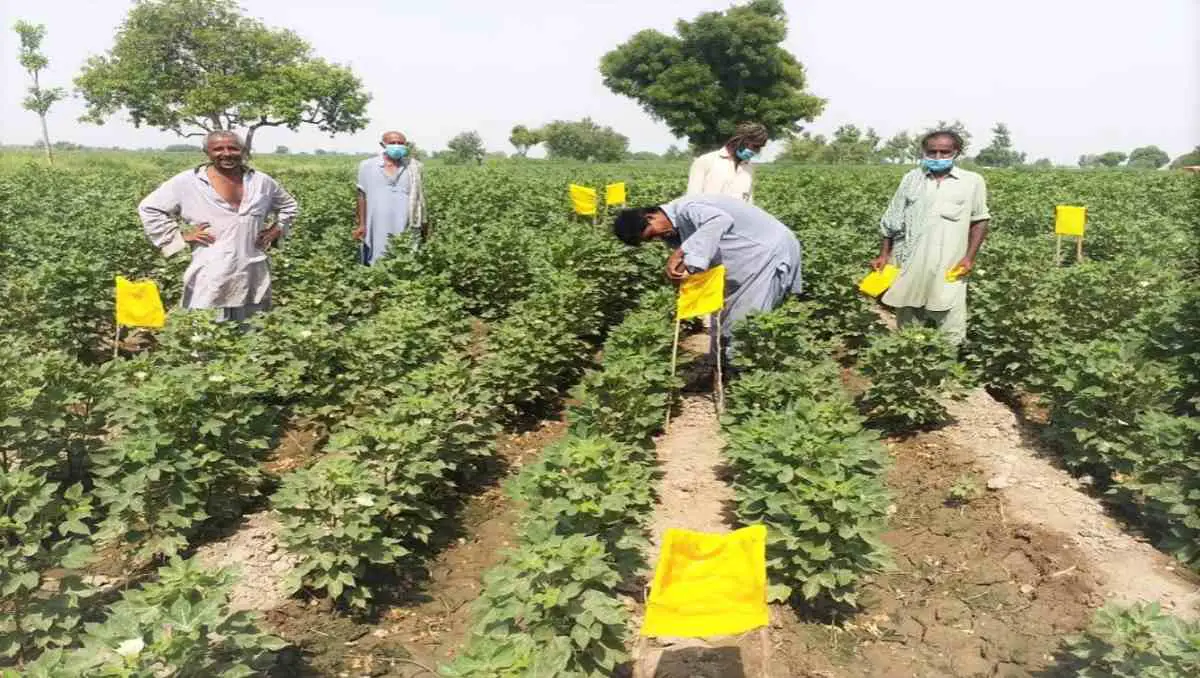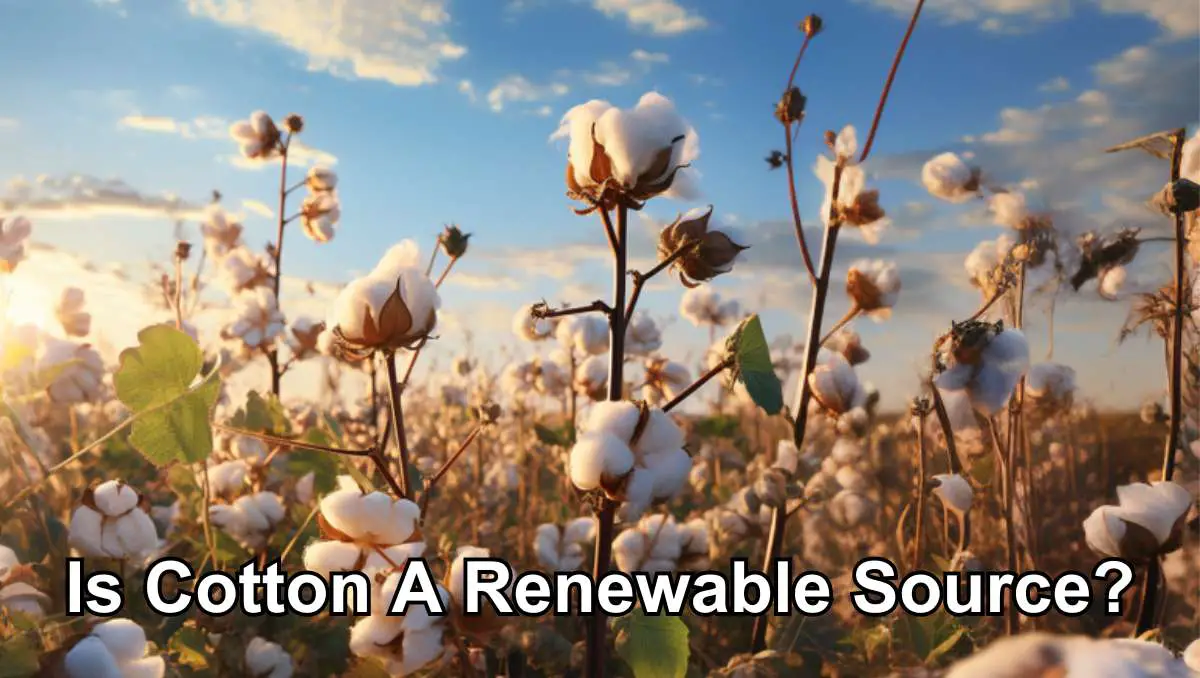Cotton, the soft and versatile fiber that clothes millions, has long been a staple in the textile industry. Yet, as global conversations shift towards sustainability, an important question emerges: Is cotton truly a renewable resource?
Cotton is considered a renewable source because it is derived from the cotton plant, which can be replanted and harvested annually. Cotton can be sustained and cultivated year after year, provided that proper agricultural practices are maintained to ensure soil health and sustainability.
In this article, we will delve into the question of whether or not cotton can be considered a renewable resource. We will explore its lifecycle, examine its environmental impacts, and discuss sustainable farming practices that could shape the future of cotton production.
Understanding Renewable vs. Non-Renewable Resources
Understanding the distinction between renewable and non-renewable resources has become paramount in today’s eco-conscious world. This understanding forms the basis for making informed decisions in daily life and industries that foster a sustainable future.
At their core, renewable resources are naturally replenished on a human timescale. This means that even as we consume them, nature works in tandem to replace them. However, the sustainability of renewable resources largely depends on the consumption rate. Overharvesting or misuse can threaten their renewability.
Contrastingly, non-renewable resources do not naturally replenish within a human lifespan. Once consumed, they’re gone for good. The main concern with non-renewable resources is their depletion. Over-reliance and excessive consumption can lead to exhaustion, creating a need for alternative resources or new technologies.
Below are a few examples of renewable and non-renewable resources.
| Renewable Resources | Non-Renewable Resources |
| Solar Energy: Every day, the sun showers the Earth with abundant energy, which can be harnessed through solar panels. | Fossil Fuels: Oil, coal, and natural gas fall under this category. Formed over millions of years from decayed organic material, their extraction and use are far faster than their formation. |
| Wind Energy: Generated by the Earth’s atmospheric conditions, it can be captured using wind turbines. | Metals and Minerals: Elements like gold, silver, and numerous others are extracted from the Earth but aren’t replaced. |
| Biomass: Plants and organic materials that can be used as fuel and are constantly regrown. | Nuclear Fuels: Uranium, used in nuclear power plants, is also non-renewable. |
| Water: While the freshwater on Earth is finite, the water cycle ensures it’s continually purified and replenished in nature. | Rare Earth Elements (REEs): A group of 17 elements crucial in manufacturing many high-tech products like smartphones, renewable energy systems, and defense applications. |
Is Cotton A Renewable Source?

Cotton, as a plant, is renewable because it can be grown year after year. Farmers cultivate cotton in their fields and harvest it when the time is right. However, the sustainability of cotton lies not only in its renewability but also in how it’s produced.
To mitigate its environmental impact, sustainable practices are emerging. Sustainable fashion brands are increasingly turning to renewable alternatives like organic cotton or recycled fibers. Organic cotton reduces harmful chemicals and promotes biodiversity by avoiding synthetic fertilizers and pesticides. Recycled fibers give new life to discarded garments, reducing waste and conserving resources.
Ethical sourcing also plays a crucial role in ensuring cotton’s sustainability. Fair Trade certifications guarantee that workers in its production receive fair wages and safe working conditions.
While cotton can be considered renewable due to its ability to grow again each year, true sustainability lies in adopting environmentally friendly practices like using organic or recycled materials and ensuring ethical sourcing throughout production. By embracing these changes, we pave the way for a more sustainable future for the cotton industry.
The Lifecycle of the Cotton Plant
The journey of a cotton plant begins with a tiny seed, which then sprouts and grows into a beautiful flowering plant. The lifecycle stages of the cotton plant include germination, vegetative growth, flowering, boll development, and maturation.
During the vegetative growth, the plant develops leaves and stems to support its growth. Once it reaches the flowering stage, it produces delicate white flowers that eventually become bolls.
Cotton harvesting typically occurs when the bolls are fully matured. Farmers carefully pick the cotton by hand or use machinery to harvest it efficiently. After harvesting, the next step is fiber production. The cotton fibers are separated from seeds through ginning machines. These fibers can be used to make various products, such as clothing, bedding, and furniture.
The cotton industry also generates byproducts that find their purpose in different sectors. For example, cottonseed oil is extracted from the seeds and used in cooking oils and animal feed. Cottonseed meal can be utilized as fertilizer or cattle feed.
Overall, understanding the lifecycle of a cotton plant helps us appreciate its renewable nature and highlights how various industries benefit from its byproducts while striving towards sustainable practices.
The Benefits of Cotton as a Renewable Source
Cotton is a renewable resource that offers numerous benefits.
Economic value

Cotton holds significant market demand, creating many job opportunities and trade possibilities.
As one of the world’s most widely used fibers, cotton dramatically impacts the global economy. The cultivation and processing of cotton employs millions of people worldwide, especially in developing countries where it is a significant source of income. Clothes made from natural fibers, like cotton, are essential to industries and consumers alike.
Additionally, the trade opportunities associated with cotton allow countries to participate in international markets and generate revenue. Moreover, sustainable development is fostered through responsible cotton farming practices that promote environmental stewardship and social well-being.
With its economic value, cotton is environmentally friendly and economically advantageous for communities worldwide.
Sustainability, biodegradability, and recyclability
Surprisingly, the sustainability of cotton lies in its ability to biodegrade and be recycled, making it an unexpected eco-friendly option.
Finding eco-friendly and sustainably-made alternatives is crucial for reducing our carbon footprint and promoting ethical sourcing. Cotton fits this bill perfectly as it can decompose naturally, returning valuable nutrients to the environment.
Additionally, cotton fibers can be recycled and repurposed into new products, contributing to a circular economy where waste is minimized.
By choosing clothing made from sustainably sourced cotton, you not only support a renewable resource but also contribute to the longevity of our planet.
Support for organic and sustainable farming
Organic certification ensures that cotton farmers follow strict guidelines to protect the environment and consumer health.
Regenerative agriculture techniques, such as crop rotation and agroforestry, help replenish soil fertility, reduce erosion, and conserve water. By rotating cotton with other crops like legumes or grains, farmers can naturally replenish nutrients in the soil while reducing pest pressure.
Natural pest control methods like introducing beneficial insects or using neem oil instead of synthetic pesticides further minimize environmental impact.
These practices support biodiversity, contribute to carbon sequestration, and mitigate climate change effects.
The Environmental Impacts of Cotton Production
Regarding the environmental impacts of cotton production, several key points are also to consider.
Water usage in cotton farming

You’ll be amazed by the significant amount of water used in cotton farming. Water is a crucial resource in agriculture, and cotton production is no exception.
Cotton requires large amounts of water for irrigation throughout its growth cycle. In fact, it’s estimated that around 2,700 liters of water are needed to produce just one cotton t-shirt. This high water demand has raised concerns about water conservation and sustainability in cotton farming.
Farmers have been adopting more efficient irrigation methods, such as drip irrigation and precision sprinklers, to address this issue and minimize water usage. Additionally, efforts are being made to promote sustainable agriculture practices that reduce water pollution and protect against water scarcity.
These measures aim to ensure the long-term viability of cotton production while minimizing its environmental impact on water resources.
Pesticide and chemical use
Cotton is one of the most chemically intensive crops globally, and this has both environmental hazards and human health impacts. Pesticides used in conventional cotton farming can contaminate soil waterways and even end up in our food chain.
However, there are ways to reduce pesticide use in cotton farming. One approach is through organic alternatives, where farmers rely on natural methods to control pests and diseases. Sustainable farming techniques such as crop rotation and integrated pest management can also help minimize chemical inputs.
By adopting these practices, we can promote a more environmentally friendly and sustainable cotton industry while ensuring the well-being of both humans and ecosystems.
Soil health considerations
Soil health is crucial to consider when discussing cotton as a renewable source. Sustainable farming practices aim to minimize soil erosion and enhance nutrient management.
Techniques such as cover crops and crop rotation can significantly improve soil health. Cover crops help prevent soil erosion by covering the soil when cash crops are not grown. Crop rotation also plays a vital role in maintaining healthy soils by reducing pest pressure and replenishing nutrients.
Additionally, conducting regular soil testing enables farmers to understand the specific needs of their fields and make informed decisions regarding fertilizer application. By adopting these practices, we can ensure that cotton production remains sustainable while preserving our precious soils for future generations.
Sustainable Cotton Farming Practices
When it comes to sustainable cotton farming practices, there are three key points to consider.
Organic cotton cultivation
Organic cotton cultivation offers a sustainable and eco-friendly alternative to conventional methods. Using sustainable farming methods, organic cotton benefits both the environment and the farmers.
One key aspect of organic cotton farming is water conservation techniques. Instead of relying on chemical-intensive irrigation systems, organic farmers utilize efficient watering methods such as drip irrigation. This reduces water waste and helps preserve this precious resource.
Additionally, organic cotton farming focuses on soil health by avoiding synthetic fertilizers and pesticides that can harm ecosystems. Farmers instead use natural compost and cover crops to enrich the soil, promoting long-term sustainability.
Integrated pest management

Integrated pest management involves a combination of strategies to control pests in an environmentally friendly manner. One crucial aspect is crop rotation, which helps prevent the buildup of pests by varying the types of plants grown in a specific area.
Another strategy is biological control, where natural enemies like ladybugs or parasitic wasps are introduced to target and control pests. Cultural practices such as proper irrigation and planting times can also help reduce pest populations.
Farmers can significantly reduce pesticide use by implementing these methods while maintaining healthy cotton crops. This approach promotes sustainability and supports the long-term viability of cotton cultivation as a renewable source.
Water conservation techniques
Try implementing techniques such as drip irrigation or mulching to conserve water in your farming practices. Drip irrigation is a method that delivers water directly to the roots of plants, reducing evaporation and water waste. It allows for precise control over the amount of water each plant receives, resulting in more efficient water usage.
Another technique is rainwater harvesting, where you collect and store rainwater for later use on your crops. This helps reduce reliance on freshwater sources and conserves resources.
Crop rotation is another effective method to conserve water, as it helps improve soil health and reduces the need for excessive watering. Lastly, using water-efficient equipment like sprinklers with adjustable settings can help optimize water distribution and minimize waste.
The Future of Cotton Production
You can expect an exciting future for cotton production, as it’s projected to increase by 25% in the next decade. Future innovations in cotton production hold great promise for the industry.
One area of focus is genetic modification, which aims to improve the quality and yield of cotton crops. By enhancing traits such as pest resistance and drought tolerance, genetically modified cotton varieties have the potential to increase productivity and reduce the need for chemical pesticides.
Automation in farming is another trend that will shape the future of cotton production. Advancements in robotics and artificial intelligence are enabling farmers to automate tasks such as planting, harvesting, and irrigation. This increases efficiency, reduces labor costs, and minimizes environmental impact.
In addition to these technological advancements, alternative fiber sources are being explored to lessen reliance on traditional cotton production. Fibers made from recycled materials or agricultural waste offer a more sustainable option for textile manufacturing.
The circular economy concept is also gaining traction within the cotton industry. This approach promotes recycling and reusing materials throughout their lifecycle, reducing waste and conserving resources.
The Verdict on Cotton’s Renewability
Cotton, as a naturally occurring plant fiber, is indeed renewable in the sense that it can be replanted and grown each year. However, the question of its sustainability is multifaceted.
In the larger context of environmental health and resource conservation, striking a balance is imperative. Recognizing cotton as renewable is only the first step; understanding and implementing sustainable cultivation practices is the path forward.







